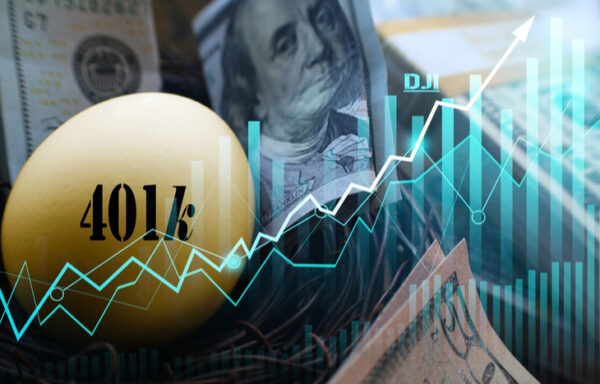Why We’re Not Done With the Coronavirus
In the market, it’s as if the novel coronavirus scare never happened. After a rough end to January, stocks have come roaring back. Major averages are back to all-time high levels, surpassing the previous records set on January 17.
The reality of coronavirus is different, of course. More than 900 deaths have been attributed to the virus, and more than 40,000 cases have been confirmed in China. More than 300 cases have been confirmed outside of China in 27 different countries and territories.
But that could be just “the tip of the iceberg,” the World Health Organization says.
And the economic impact is only just beginning to be felt. On Monday, Chinese workers were scheduled to return to work after the extended Lunar holiday. But concerns about the virus led to only a partial reopening of China’s economy, the world’s second largest.
“Given that China is now at the heart of many global supply chains, this [outbreak] will have knock-on effects around the world,” Neil Shearing, chief economist of Capital Economics, told The Financial Times.
And while investors can compare coronavirus to the 2003 SARS outbreak, they should also remember that China’s economy is much larger and more important to the global economy now than it was then.
Consider…
- China’s economy is valued at $13.6 trillion today compared with just $1.6 trillion in 2003, according to the World Bank.
- In 2018, China’s exports hit $2.5 trillion versus just $438 billion in 2003.
- The International Monetary Fund expects China’s economy to account for nearly 17% of global output this year compared with just 4.3% in 2003.
Unfortunately, the global economy hadn’t had time to recover from the U.S.-China trade battle before the virus hit, prompting analysts at BMO Capital Markets to quip, “Looks like we picked the wrong year to be even modestly bullish on global growth prospects.”
Global corporations initially responded to the virus by closing or seriously limiting operations in China. The impact is now starting to ripple across the globe. On Friday, Fiat Chrysler (NYSE: FCAU) said it may have to close one of its plants in Europe, citing a looming parts shortage.
This week, Amazon (Nasdaq: AMZN) and Sony (NYSE: SNE) announced they will not be sending employees to Mobile World Congress – a major industry event – in Barcelona.
Similarly, Lockheed Martin (NYSE: LMT), Raytheon (NYSE: RTN) and dozens of other companies withdrew from the Singapore Airshow.
Fewer attendees at events like these will hurt local businesses, such as hotels and restaurants in Barcelona and Singapore. Canceled reservations will trickle down to the employees of those establishments, likely putting a crimp in their spending.
At the corporate level, big deals are often conceived at these industry confabs. The absence of major players will certainly have an impact. Shuttered factories will certainly impact first quarter results, and the supply chain hiccups could hit the world’s largest corporations.
Production delays in China will likely “disrupt the supply chain further for Apple on both its core iPhone franchise and AirPods unit production,” writes Wedbush Securities analyst Dan Ives.
These are just a few examples of how the coronavirus is rippling far beyond China’s shores…
Yes, as noted above, the U.S. stock market has resumed its upward trajectory. What gives?
For answers, let’s return to the three reasons to be bullish I cited in November.
1. The Fed
A few weeks after my original article ran, Fed Chairman Jay Powell confirmed the U.S. central bank is unlikely to raise rates anytime soon. “I would want to see… a significant move up in inflation that’s also persistent before raising rates to address inflation concerns,” he declared.
Since the coronavirus outbreak, odds of a U.S. rate cut by midsummer have risen to more than 50%.
There’s a lot of talk about how the Fed is doing the “wrong thing” and encouraging speculation. But what has really been wrong, for more than a decade now, is our tendency to fight the Fed. That will likely remain a bad habit for the foreseeable future.
2. New Deals
2019 was the fourth-biggest year ever for global deal-making, according to Refinitiv. Deloitte’s 2020 mergers and acquisitions trends survey “reveals clear and strong signals that deal activity will persist” this year.
Just 4% of respondents forecast a decline in the number of deals, and only 2% anticipate a drop-off in deal size.
This week kicked off with Simon Property Group (NYSE: SPG) agreeing to acquire mall operator Taubman Centers (NYSE: TCO) for $3.6 billion, a roughly 50% premium to Taubman’s closing price on Friday.
In addition, Xerox (NYSE: XRX) raised its offer to buy PC maker HP (NYSE: HPQ) from $22 per share to $24 per share. These deals signal that executives remain optimistic about the long term, despite the short-term threat from coronavirus.
3. Recession Fears Are Fading
Hurt by the trade war with China, the U.S. economy grew just 2.3% in 2019. While that’s not gangbuster growth, it is solid.
More importantly, the U.S. job market remains strong. Average hourly earnings rose 3.1% in the past 12 months, and the labor force participation rate reached 63.4% in January, matching its highest level since June 2013.
Nearly 70% of Americans say now is a good time to find a job, according to a recent Gallup poll. Additionally, 60% say they are better off financially than they were a year ago, matching all-time high levels hit in 1999.
The Market Will Recover Stronger
Given the consumer drives two-thirds of the economy, it’s nearly impossible for the U.S. to fall into a recession when so many Americans are working and feeling optimistic about their finances.
Moreover, stocks remain attractive relative to bonds, which is one of the big reasons the market keeps going higher despite the stress of coronavirus and other concerns.
As of last week, a record 63.8% of S&P 500 stocks have dividend yields above the 10-year Treasury yield. “As long as bond yields remain low, stocks remain relatively attractive to institutions,” according to trading expert Mark Minervini.
“We will experience pullbacks and corrections, but the bull is still alive.”
I couldn’t agree more.
About Aaron Task
Aaron is an expert writer and researcher who formerly served as editor-in-chief at Yahoo Finance, digital editor of Fortune, and executive editor and San Francisco bureau chief of TheStreet. You may have also seen him as a guest on CNBC, CBS This Morning, Fox Business, ABC News and other outlets.
A prolific writer and commentator, Aaron is the former host of Yahoo Finance’s video program The Daily Ticker. He has also hosted podcasts for Fortune (Fortune Unfiltered) and TheStreet (The Real Story). His latest on-air passion project, Seeking Alpha’s highly rated Alpha Trader podcast, features top Wall Street experts dissecting the market’s latest news and previewing significant upcoming events. He also regularly provides analysis for the free e-letter Wealthy Retirement, which we will be republishing here on Investment U.






